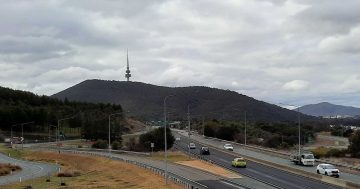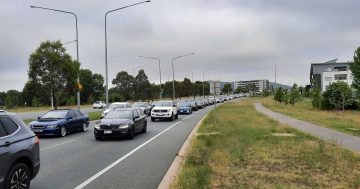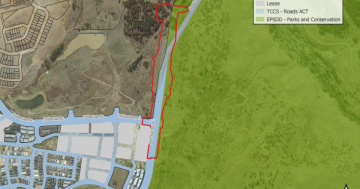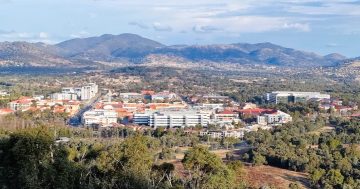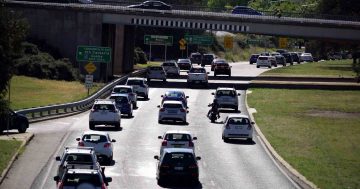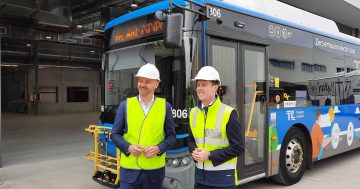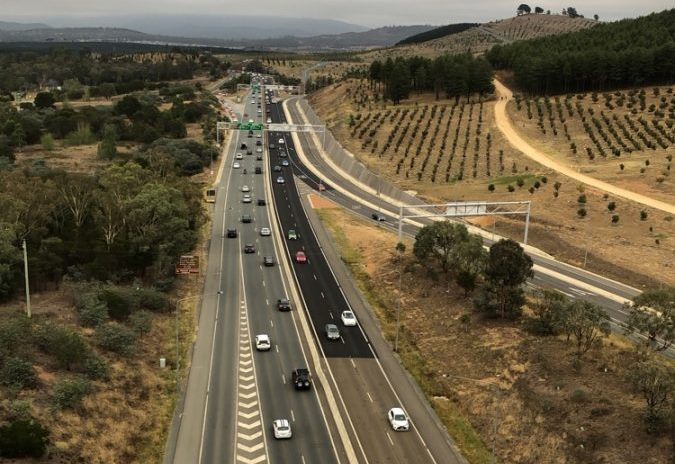
The Tuggeranong Parkway takes 40,000 vehicles a day and rising. Photo: File.
The increasing vulnerability of Canberra’s major south-western artery to traffic snarls and expected further pressures from new suburban and city population growth has the ACT Government worried about whether the corridor will be able to cope.
It wants to know what long-term upgrades are needed along Parkes Way, from Kings Avenue to the Glenloch Interchange, and the length of the Tuggeranong Parkway to relieve traffic congestion, improve safety and increase capacity for heavier freight vehicles.
In the short and medium-term, the government also wants to know what improvements can be made to the section between the Glenloch Interchange and Commonwealth Avenue.
The government seeks a consultant to develop an Infrastructure Study Report that takes in existing road conditions, utilities and stormwater networks, and options for upgrades along Parkes Way and the South-West Corridor.
Parkes Way and the Tuggeranong Parkway, particularly between the Glenloch Interchange and the Cotter Road, have become notorious for peak-hour gridlock when accidents, even minor ones occur, due to the restrictions of the road and the limited viable alternative routes available.
The government has tried various remedies, including the painting of chevrons on the road to help prevent tailgating and is in the process of converting the northern stretch of the Parkway into Canberra’s first smart road with the installation of cameras and variable speed limits using sensors.
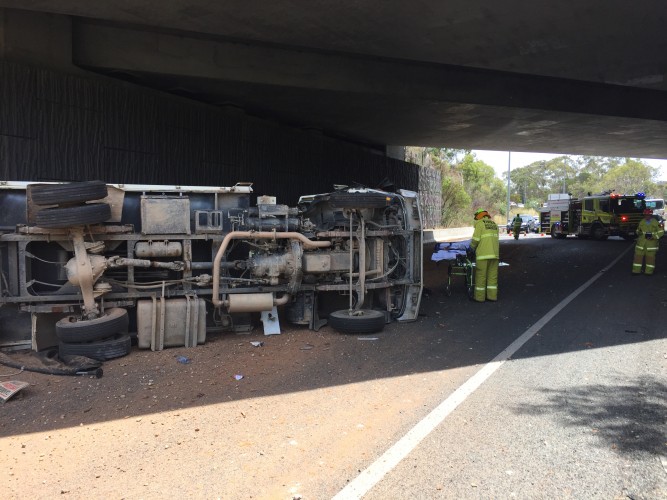
A truck rollover in the Glenloch Interchange underpass: the sort of accident that can bring the road network to a standstill. Photo: ESA.
But the tender document says traffic volumes are expected to continue to increase due to ongoing land releases and associated population growth in the west of Canberra, combined with the densification of city and town centres.
The Tuggeranong Parkway during peak times caters for more than 4,000 vehicles per hour and more than 40,000 a day.
The study will have to account for a number of projects in train, including Light Rail Stage 2A and new traffic lights at the Coranderrk Street/Parkes Way intersection and the raising of London Circuit, and a new road from the Molonglo Valley to the Parkway.
The Molonglo Valley developments are already pouring new traffic into the Cotter Road and on to the Parkway. This planned new road from Molonglo will mean developing a new interchange north of the Molonglo River and an extra lane by 2026.
The tender document also says the study will support the freight network in the Canberra region by improving East-West connectivity through Parkes Way and identifying the preferred secondary East-West road freight corridor through Canberra.
This will mean upgrading the corridor to take bigger and heavier freight loads. For example, the study will look at height limits in the Acton Tunnel and under the Commonwealth Avenue bridges that restrict the size of trucks using the corridor, load ratings against current standards for bridges and culverts, and pavement issues.
The study will also examine the Tuggeranong Parkway bridge over the Molonglo River because the bridge has minimal shoulders and is unlikely to be widened in the future, and the Glenloch Interchange, which is likely to become a problem when additional capacity is added to the Parkway.
Other factors the consultant will need to take into account are future land releases in the Acton Waterfront and City West, and the UNSW Canberra development in Reid.
The tender closes on 31 May.












